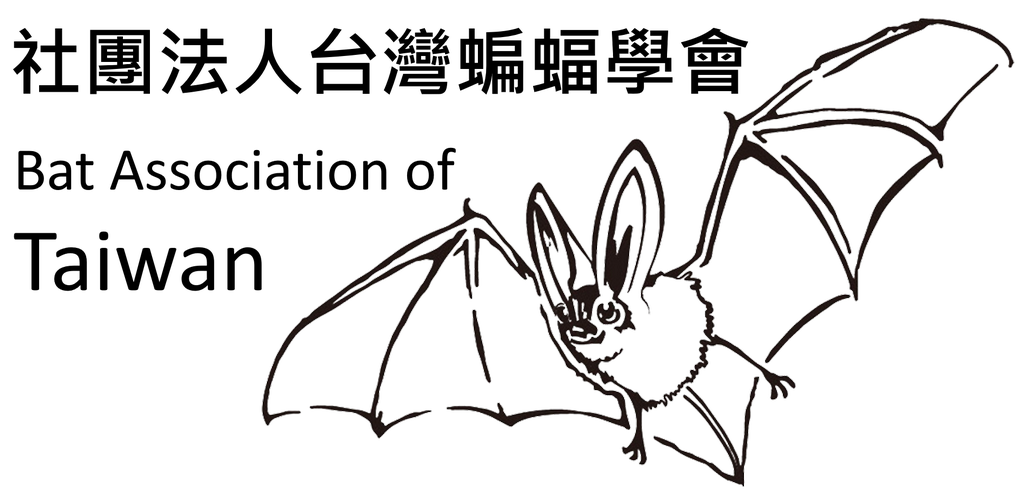蝙蝠研究
2013_台灣地區蝙蝠生殖生態研究_陳家鴻
出版年份:2013
研究生:陳家鴻
分類:碩士論文
題目:台灣地區蝙蝠生殖生態研究
Title:Reproductive Ecology of Bats in Taiwan
摘要:
本論文的研究主題包括三部分:一、洞穴蝙蝠之生殖週期組織學研究,二、洞穴蝙蝠之生殖賀爾蒙之季節性變化探討,三、森林性蝙蝠之生殖物候學研究。
本研究於2006年3月起至2007年2月,分別對於台灣中部南投縣中寮鄉之台灣葉鼻蝠與台灣南部屏東縣墾丁關山地區之摺翅蝠兩種洞穴型蝙蝠進行生殖週期之組織學研究,並比較相同族群不同年間(台灣葉鼻蝠)與不同緯度之族群在不同年間(摺翅蝠)之生殖週期變化。台灣中部之台灣葉鼻蝠在不同年間生殖週期的時程上差異不大,雄蝠生精現象於5月開始,並持續到8、9月,副睪中6月開始出現大量精子而9月以後則無精子儲存或殘留。雌蝠則2至3月卵巢中出現黃體,成熟的葛蘭氏濾泡於8月出現,9月觀察到1個黃體,且有許多閉鎖濾泡,由此可知排卵、受精發生在8至9月間。子宮內則自2月觀察到原腸期胚胎,3月至4月則從原條期發育至成形胎兒,幼蝠於5月下旬至6月初出生,而在9月發現子宮中已著床的原腸期胚胎,生殖型式屬於胚胎延遲發育型。
南部與中部的摺翅蝠族群雄蝠之生精現象於9月開始,同時間副睪中亦充滿精子,2月的採樣中副睪只剩少量精子存在。雌蝠於1至5月在卵巢中出現1個巨大黃體,7月則出現許多成長中濾泡,葛蘭氏濾泡於9月下旬始出現。1、2月於子宮中出現原腸期之胚胎,成形胎兒於4月形成,6月下旬則所有個體均已生產並結束泌乳。一直到9月的個體,子宮內並無觀察到明顯的變化,由此可知排卵、受精皆發生在9月下旬以後。因為缺乏10月之後的組織學檢視資料,在比較中部地區族群的結果,在生殖事件的時程上大致相同。惟3月的1隻雄蝠切片中發現正處於生精現象,且副睪中也有精子出現,是否為南部族群的特例或因為緯度較低而存在之生殖過渡現象,必須進一步追蹤研究。
同時,本研究針對上述採樣之個體,進行生殖賀爾蒙濃度季節性變化之研究,對雌蝠選定黃體激素,雄蝠為睪固酮,抽取血液中之血清,進行每月的濃度測定探討整年之變化與調控情形,並比較不冬眠的台灣洞穴蝙蝠種類與溫帶地區相同之生殖延遲型式下是否有不同變化情形。台灣葉鼻蝠之雄蝠體內睪固酮濃度變化與生精作用相一致,從5月的最低值(2.0 ng/ml)開始上升至8月的最高峰(54.3±4.7 ng/ml)後下降。雌蝠之黃體激素變化亦與胚胎延遲、發育與生產時間相互配合,從2月的7.8±3.6 ng/ml至4月達最高峰(27.2±6.8 ng/ml),而在生產過後的6月降至最低值,亦與停滯胚胎再發育(3至5月)與生產時間(5至6月)互相一致。屬於延遲胚胎著床的摺翅蝠,雄蝠體內睪固酮濃度變化從6月的極低值(24.5±7.9 ng/ml)開始上升至10月達最高峰(753.2±195.0 ng/ml)與生精現象時間(7月開始)互相對應,隨後下降至12月的極低值39.4±39.0 ng/ml,而在2月又上升至274.6±180.4 ng/ml,之後再降至最低的22.8±12.2 ng/ml。在雌蝠黃體激素的濃度變化從3至5月逐漸升高,4月達高峰69.5 ng/ml,而5月記錄到之個體濃度最高為93.5 ng/ml,6月明顯降至最低值(1.2±0.3 ng/ml),一直到10月維持一極低水平,11月稍微上升後12月又下降,2月再度微幅上升(27.2±6.8 ng/ml)。若同時亦對映中部地區的族群,摺翅蝠之黃體激素濃度變化在11月排卵與受精,2、3月之後胚胎快速發育,而在5至生產過後的6月降至最低值,亦與胚胎延遲著床期(11至2月)與生產時間(5至6月)互相一致。台灣葉鼻蝠和溫帶地區會進行冬眠的物種或族群之生殖延遲的現象相比較,其相同的生殖型式中,生殖激素的調控與變化呈現大致相同的狀況。而台灣南部之摺翅蝠與中部的族群亦大致相似,並且在生殖週期的生殖激素調控上,似乎沒有如日本的族群,具有胚胎著床後的另一個延遲發育期。
自2008年1月起至2011年12月,針對台灣中部苗栗縣泰安鄉雪見地區中海拔,進行森林性蝙蝠之長期調查,記錄當地所有蝙蝠物種之整年生殖狀況物候變化,由捕捉到的888隻次個體,共計有22種蝙蝠,除得到本區的優勢種類有台灣長耳蝠、台灣管鼻蝠與寬吻鼠耳蝠,並記錄到有8種雌蝠(無尾葉鼻蝠、台灣小蹄鼻蝠、金芒管鼻蝠、台灣管鼻蝠、姬管鼻蝠、長趾鼠耳蝠、白腹鼠耳蝠與台灣長耳蝠)在本區進行生殖育幼。由累積4年的資料顯示,大部分的雄蝠睪丸於6月份開始腫脹,11月之後逐漸萎縮,副睪於10月之後陸續有明顯及腫脹的情形,到3月之後完全萎縮,推測雄蝠睪丸之生精現象大致開始於5至7月,結束於11月,而副睪中精子儲存期間可以從10月持續到隔年3月份。雌蝠則最早於3月份記錄到懷孕個體,6月後進入生產後泌乳期,6月至9月陸續捕獲當年出生之幼蝠,9月之後則無明顯之哺育活動。另外共記錄到台灣小蹄鼻蝠、東方寬耳蝠、摺翅蝠、金芒管鼻蝠、台灣管鼻蝠、姬管鼻蝠、寬吻鼠耳蝠、山家蝠與台灣長耳蝠等9種雄蝠與台灣管鼻蝠與台灣長耳蝠2種雌蝠皆於出生後第二年始達性成熟。依據調查結果得知台灣中部中海拔山區之蝙蝠為季節性的單一動情週期之生殖型式,推測至少有台灣管鼻蝠、姬管鼻蝠、金芒管鼻蝠、寬吻鼠耳蝠、山家蝠與台灣長耳蝠等6種蝙蝠應屬於延遲受精(精子儲存)之生殖策略。
Abstract:
This dissertation included three parts: (1) histological study of reproductive cycle of cave-dwelling bats, (2) seasonal changes in reproductive hormones of cave-dwelling bats, and (3) reproductive phenology of forest bats.
The histology study of reproductive cycle of Hipposideros terasensis in central Taiwan and Miniopterus schreibersii in southern Taiwan were investigated from March 2006 to February 2007. Comparison of the difference between years of former study in 1998 (H. terasensis) and different population in 2000 (M. schreibersii) were made. No difference was showed in H. terasensis. In males, spermatogenesis began in May, and lasted to August and September. Sperm appeared in ductus epidydimidis from June to September. In females, a single large corpus luteum was observed in the ovaries in February and March. Graafian follicle was seen in August followed by a single large corpus luteum and atretic follicles in September. According to the results, it was possible to determine that ovulation and fertilization occurred between August and September. Gastrula was observed in the uterus in February whereas primitive streak stage to fetal formation occurred from March to April. It belongs to the strategy of delayed embryonic development.
Spermatogenesis of M. schreibersii in southern Taiwan began in September that was the same period with central population in different year. Ductus epidydimidis was full of sperm at the same time and there was still some remained in February. In females, a single large corpus luteum was observed in May. Developing follicles appeared in July and Graafian follicle was seen in late September. Gastrula was observed in the uterus in January and February whereas fetal was formed by April. All bats were in the end of lactation by late June. There was no obvious change in the uterus till September. According to the results, it was possible to determine that ovulation and fertilization occurred after late September. Lacking of the data after October, we compare the reproductive events with central population and it showed the same periodic results in substance. Only that a male bat in March showed spermatogenesis as well as sperm was seen in the ductus epidydimidis. Further study was needed to clarify the phenomenon an exception or transition stage in southern population resulted by lower latitude.
To obtain monthly change of the concentration of reproductive hormones( testosterone of males and progesterone of females) we used the same specimen of the histological study and serum concentrations of hormones were measured by ELISA(enzyme-linked immunosorbent assay). In male bats of H. terasensis, concentrations of testosterone increased from baseline to peak (54.3 ± 4.7 ng/ml) in August, corresponding with spermatogenesis. For female bats, concentrations of progesterone increased to peak levels (27.2 ± 6.8 ng/ml) between February and April, before declining back to baseline after birth in June. Increase and decline coincided, respectively, with resumption of embryo development (March to May) and birth (May to June).
In male bats of M. schreibersii that showed delayed implantation, concentrations of testosterone increased from baseline(24.5 ± 7.9 ng/ml) to peak (753.2 ± 195.0 ng/ml) in October, corresponding with spermatogenesis (began in July) and declined to baseline(39.4 ± 39.0 ng/ml) in December. For female bats, concentrations of progesterone increased from March to May and peak at April (69.5 ng/ml) then declining back to baseline(1.2 ± 0.3 ng/ml) after birth in June. Slightly increased in November then declined again in December and increased to 27.2 ± 6.8 ng/ml in February. Increase and decline coincided, respectively, with resumption of embryo development (November to Februsry) and birth (May to June).
Compared to other hibernating species or species with similar reproductive patterns, H. terasensis had similar reproductive quiescence and changes and regulation of reproductive hormones. According to the changes and regulation of reproductive hormones of M. schreibersii in Taiwan, it seemed that it didn’t have post-implantation delay such as Japanese population.
To study the reproductive phenology of forest bats in higher mountains of Taiwan we carried out a long-term investigation in Syuejian area(Tai-ann Township, Miaoli County) located in an elevation of 1900m from January 2008 to December 2011. We surveyed all the species of the place by two harp traps and using mark-recaptured method. Totally 888 captures of 22 species from 3 families were recorded. The most dominant species was Plecotus taivanus, Murina puta and Myotis latirostris. There were at least 8 species of bats showed breeding activity in study area. From the 4-year data, testis of most male bats began to swell in June and regressed after November. The epididymis became obviously and swollen in October and regressed after March. It was suggested that spermatogenesis took place from May to July and ended in November whereas sperm stored in epididymis from October to next February. The earliest record of pregnant female was recorded in March with lactation period in June. Young bats of the year were captured continually from June to September and no reproductive activity was recorded after September. Sexual maturity was more than 13 months in 9 species of male bats and 2 species of female bats. Forest bat species in the higher mountains in central Taiwan showed seasonal monestry pattern and at least 6 species of bats belonged to the reproductive strategy of delayed fertilization(sperm storage).
